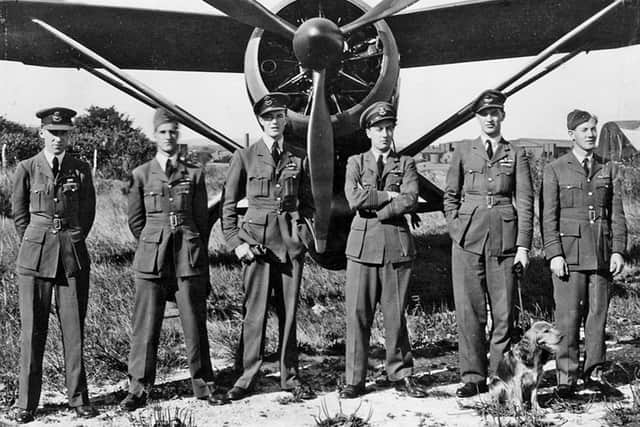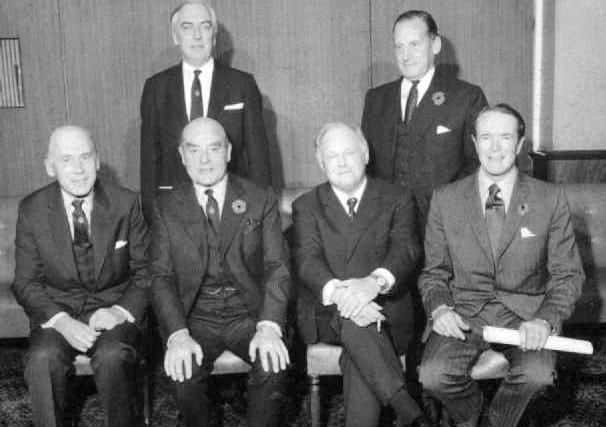Courage of pick-up pilot Robin Hooper


They were modified to carry secret agents and French resistance operators to and from French fields at night during moonlight periods.
The pilots who flew these single pilot clandestine missions were known as pick-up pilots.
Advertisement
Hide AdAdvertisement
Hide AdFlight Lieutenant Robin WJ Hooper was a linguist and a few years older than most pick-up pilots. Before joining No 161 Squadron he had completed a tour at RAF Tempsford, Bedfordshire, as a Halifax pilot with No 138 Special Duties Squadron, parachuting agents and supply containers into occupied territory.


He, like Hugh Verity, No 161 Squadron’s Lysander ‘A’ Flight commanding officer in 1943, had gone to Queens College, Oxford before the war and joined Oxford University Air Squadron. After university he joined the Diplomatic Service.
Hooper started training with No 161 Squadron in the dark period between the June and July moons in 1943 and was operational by the August moon period, replacing the experienced ‘Bunny’ Rymills.
His first operation was on the night of 14/15 August which failed due to bad weather but, on repeating it the next night, he succeeded in taking one passenger out and bringing two passengers – known as Joes – back.
Advertisement
Hide AdAdvertisement
Hide AdDuring the same moon period, Hooper, with James ‘Mac’ McCairns, completed a double Lysander operation on 20/21 August, and another successful ‘double’ on 11/12 September.


However, on the night of 11/12 November, in a ‘triple’ operation, Hooper was the first to land but had to order the following McCairns and Bathgate to abort because of the muddy condition of the ground.
Hooper’s next pick-up operation was Operation Scenery on 16/17 November. After two unsuccessful attempts due to low mist surrounding the landing field he managed to land. However, he landed on very soft ground and turning the aircraft proved to be impossible since the wheels had dug themselves into deep grooves.
The aircraft was now immovable even with the engine at full boost. He told his ‘Joes’ to get out and got down to inspect the problem. He found the aircraft was bogged down to spat level in a soggy water meadow.
Advertisement
Hide AdAdvertisement
Hide AdThe reception committee was soon organised to try to push the aircraft out but this proved impossible. At this point two bullocks – Fridolin and Julot by name – were brought from the nearest farm. But despite the efforts of this team, later augmented by a further two bullocks, the Lysander remained stuck.
With daylight approaching, Hooper had no alternative but to set fire to the aircraft and go into hiding with the resistance.
After a month in hiding he was brought back to Tangmere by 161’s commanding officer, Wing Commander Bob Hodges on the night of 16/17 December.
As they crossed the English coast Hodges was advised that the cloud base was getting lower and that fog was rolling in.
Advertisement
Hide AdAdvertisement
Hide AdHe managed to carry out an exemplary instrument approach and landed safely. Tragically, later the same night, two other 161 pick-up pilots, ‘McB’ McBride and Stephen Hankey were killed attempting to land at Tangmere and Ford respectively.
On his return, Hooper was awarded the Distinguished Service Order and in March 1944 was posted to AI2(c), the Air Ministry branch organising Special Duties operations.
After the war he returned to the Diplomatic Service, was knighted and became Britain’s Ambassador to Greece.
Sir Robin Hooper KCMG DSO DFC died in 1989, aged 74.
This article is the 59th in a series of monthly articles on the people of RAF Tangmere. More information on the museum can be found at www.tangmere-museum.org.uk